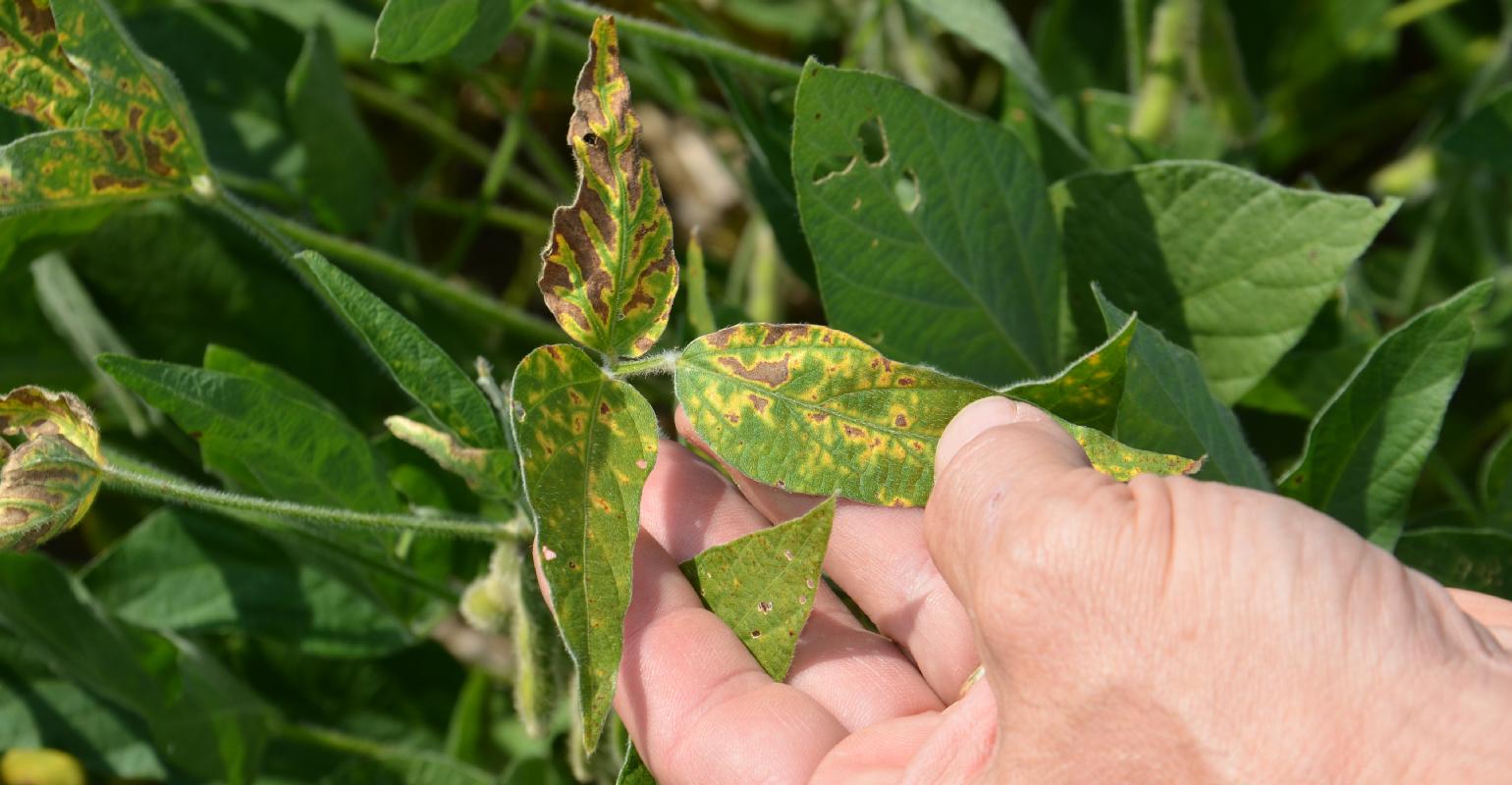When seed treatment for sudden death syndrome may pay

Soybean Pest Beat: Take a hard look at several factors before deciding how to fight SDS.
Jan 13, 2021
The seed treatment for sudden death syndrome is roughly an extra $10 per acre. We see it in parts of some fields. Should we order just enough treated seed for where we really need it? We don’t have a multi-variety planter, so I’m wrestling with how that would work. Any advice?
The Indiana certified crop advisers panel includes Danny Greene, owner of Greene Crop Consulting, Franklin; Jeff Nagel, agronomist with Ceres Solutions, Lafayette; and Marty Park, agronomist with Gutwein Seed Services, Rensselaer.
Greene: In general, to decrease the risk of SDS, you should increase soil drainage, reduce soil compaction and plant into warm soils. If you’re going to plant into cool soils and you have a history of yield reduction from SDS, plant treated seed. Ilevo and Saltro are two popular seed treatment options for controlling SDS.
To know that you could gain more than $10 per acre by switching, you must have test results of the SDS treatment versus your current non-SDS program. If you don’t have this, I recommend you plant multiple pairs of strips with and without the additional treatment in multiple fields to find out. Use the same variety. If SDS shows in leaf symptoms in late summer, look for visual differences between strips and take pictures. Aerial images may give you the best view. However, leaf symptoms don’t always result in yield differences. Be sure to follow through in separating and reviewing yield data from the strips. Don’t just assume there was a difference from eyeballing the grain tank.
Nagel: Start with evaluating the varieties you’re planting in 2021 and take note of the ratings on sudden death syndrome and the type of soybean cyst nematode protection you’re getting. SCN can cause a compromised root system and more susceptibility to SDS infection.
Next, think about your field history and where sudden death syndrome has historically occurred and/or where SCN numbers are moderate to high. The pathogen that causes SDS is soilborne, so if it has occurred in the past, it can occur again.
To complete the disease triangle, planting a susceptible SDS variety and then having cool and wet soil conditions during early vegetative stages is when plants are most likely to experience root infections. After early infection, rainfall events during the reproductive stages can allow the disease to increase and cause significant yield reductions.
If you have identified that you will be planting a variety that offers low SDS protection into a field with a history of SDS somewhere, add either Saltro or Ilevo seed treatments. Both can help reduce the impact of SDS when it occurs and suppress SCN to some extent.
Park: In northwest Indiana, it is very hard to predict if it is going to be a “sudden death year.” Some fields seem to be a little more prone to SDS. However, trying to predict the specific areas in those fields would be very difficult. The multi-variety planter would make this possible, but I would suggest running the cost analysis per acre to see how it compares to the $10 seed treatment. Some seed treatments for SDS also provide some nematode protection. The value of a bushel of soybeans also plays into this decision on the $10 investment in seed treatment.

